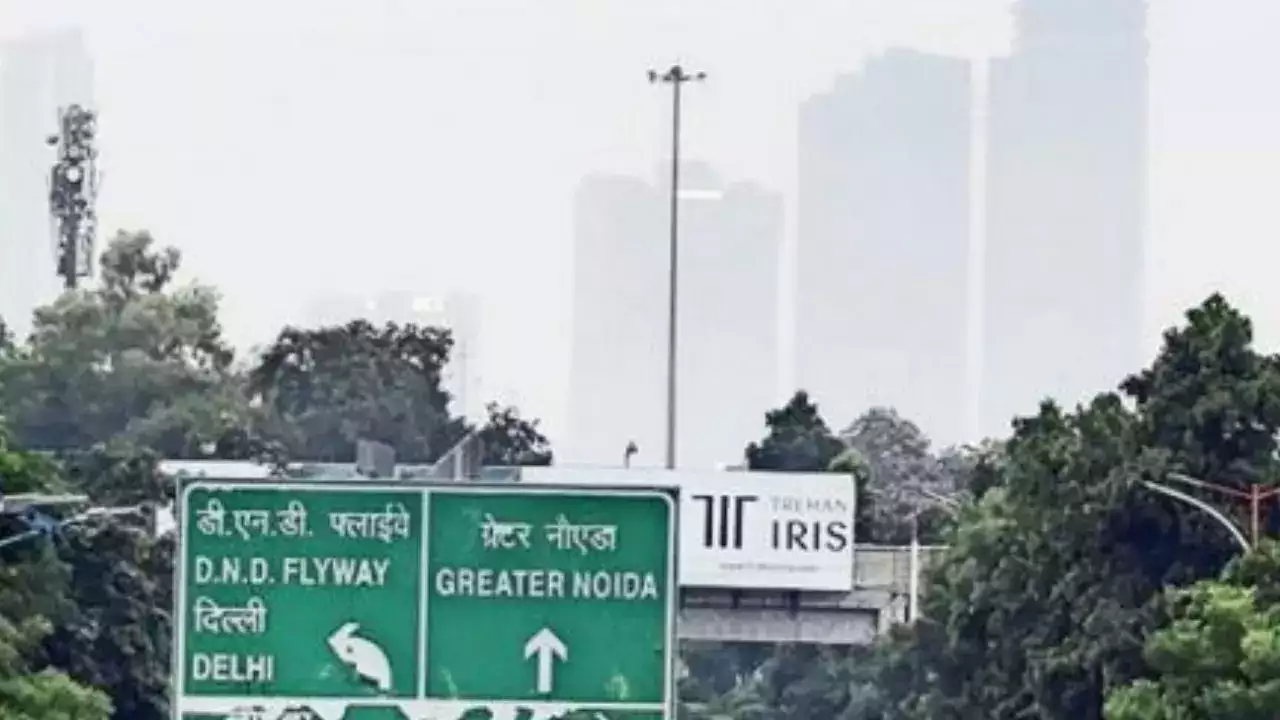New Delhi, October 27, 2023 – In response to the deteriorating air quality in Delhi-NCR, the Centre’s pollution control panel has taken decisive action. On Thursday, they issued directions to halt non-essential construction work, stone crushing, and mining in the region. This move comes as the air quality in the capital entered the ‘severe’ category. The action is part of Stage III of the Graded Response Action Plan (GRAP), the Centre’s comprehensive air pollution control plan implemented during the winter season.
According to the Air Quality Index (AQI), Delhi’s AQI stood at 402 at 5 pm. The Commission for Air Quality Management (CAQM), a statutory body responsible for combatting pollution in the region, held a meeting to review the air quality situation in Delhi-NCR. They emphasized that pollution levels are expected to increase further due to unfavorable meteorological and climatic conditions.
GRAP classifies actions into four stages: Stage I – ‘Poor’ (AQI 201-300); Stage II – ‘Very Poor’ (AQI 301-400); Stage III – ‘Severe’ (AQI 401-450); and Stage IV – ‘Severe Plus’ (AQI > 450). Stage III of GRAP entails a complete halt on construction and demolition work, except for essential government projects, mining, and stone crushing.
However, construction work related to national security or defense, projects of national importance, healthcare, railways, metro rail, airports, interstate bus terminals, highways, roads, flyovers, overbridges, power transmission, pipelines, sanitation, and water supply are exempt from the ban.
In addition to the construction restrictions, Stage III also imposes limitations on the use of certain vehicles. Specifically, BS III petrol and BS IV diesel four-wheelers are prohibited from plying in Delhi, Gurugram, Faridabad, Ghaziabad, and Gautam Budh Nagar.
To address the issue of air pollution affecting students, the CAQM suggested that Delhi, Haryana, Uttar Pradesh, and Rajasthan may conduct online classes for students up to class 5.
Health professionals have expressed concerns about the impact of air pollution on vulnerable populations, such as children and the elderly. There has been an increase in asthma and lung problems. Jugal Kishore, the head of the medicine department at Safdarjung Hospital, advised people with respiratory issues to take their medications regularly and avoid going outdoors unnecessarily. He also recommended the use of air purifiers indoors.
Scientists have warned that pollution levels in Delhi-NCR are likely to spike in the next two weeks. Neighboring cities in Haryana, Rajasthan, and Uttar Pradesh are also experiencing hazardous air quality. These cities include Hanumangarh, Sri Ganganagar, Hisar, Fatehabad, Jind, Rohtak, Sonepat, Kurukshetra, Karnal, Kaithal, Bhiwani, Faridabad, Gurugram, Ghaziabad, Noida, and Greater Noida.
One of the major factors contributing to the accumulation of pollutants is the lack of rainfall during the post-monsoon season. Government data reveals that Delhi’s air quality in October this year was the worst since 2020, with meteorologists attributing it to the absence of rainfall. October 2023 saw only one rainy day with 5.4 mm of precipitation, compared to October 2022 (129 mm) and October 2021 (123 mm).
Unfavorable meteorological conditions, combined with emissions from firecrackers, paddy straw burning, and local pollution sources, contribute to hazardous air quality levels in Delhi-NCR during the winter. An analysis conducted the Delhi Pollution Control Committee (DPCC) indicates that the capital experiences peak pollution from November 1 to November 15 when the number of stubble burning incidents in Punjab and Haryana increases.
Delhi Environment Minister Gopal Rai has called a meeting on Friday to discuss the implementation of pollution control measures under Stage III of GRAP. The authorities are prioritizing efforts to curb pollution and protect the health of the residents.

